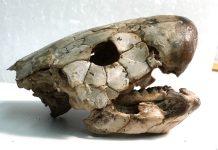
Researchers have made an exciting discovery: the oldest-known mosquito fossils, dating back to the early Cretaceous period, roughly 130 million years ago.
Published in the journal Current Biology, this discovery came from Lower Cretaceous amber found in Lebanon and has an intriguing twist – the fossils are of male mosquitoes with mouthparts designed for piercing, suggesting they too fed on blood.
This is a big deal because, in today’s world, only female mosquitoes are known to feed on blood.
Dany Azar from the Nanjing Institute of Geology and Paleontology and the Lebanese University, along with André Nel from the National Museum of Natural History of Paris, were part of the team behind this discovery.
They explained that Lebanese amber is incredibly valuable for scientific research.
It’s one of the oldest known ambers containing biological material and dates back to a time when flowering plants began to spread, along with their pollinators.
Previously, the oldest mosquito fossils were from the mid-Cretaceous period. This new discovery pushes back the appearance of the mosquito family, known as Culicidae, by about 30 million years to the early Cretaceous.
This is significant because it helps fill in gaps in the mosquito lineage and offers new insights into their evolution.
The Culicidae family is large, encompassing over 3,000 mosquito species. Modern female mosquitoes are infamous for their blood-sucking habits, which make them vectors for many infectious diseases.
The discovery of blood-sucking habits in ancient male mosquitoes suggests a more complex evolution of this trait than previously thought.
It’s believed that hematophagy, or blood-feeding, in insects evolved from mouthparts originally used for sucking plant fluids. For example, fleas, which now feed on blood, likely evolved from ancestors that fed on nectar.
The study, conducted by Azar, Nel, Diying Huang, and Michael S. Engel, describes the male mosquitoes’ sharp, triangular mandibles and elongated structures with small, tooth-like parts, ideal for piercing. This anatomy suggests these ancient male mosquitoes were equipped for blood-feeding.
This new finding challenges previous beliefs about mosquito evolution. The presence of hematophagy in these ancient males indicates a more intricate evolutionary path than previously considered.
It extends the definitive existence of mosquitoes back to the early Cretaceous and opens up new questions about the evolution of blood-feeding habits in insects.
Looking ahead, the research team is eager to explore why these early Cretaceous male mosquitoes needed to feed on blood and why this trait has disappeared in modern male mosquitoes.
This fossil discovery not only provides a fascinating glimpse into the past but also opens new doors for understanding the complex evolutionary journey of mosquitoes.



